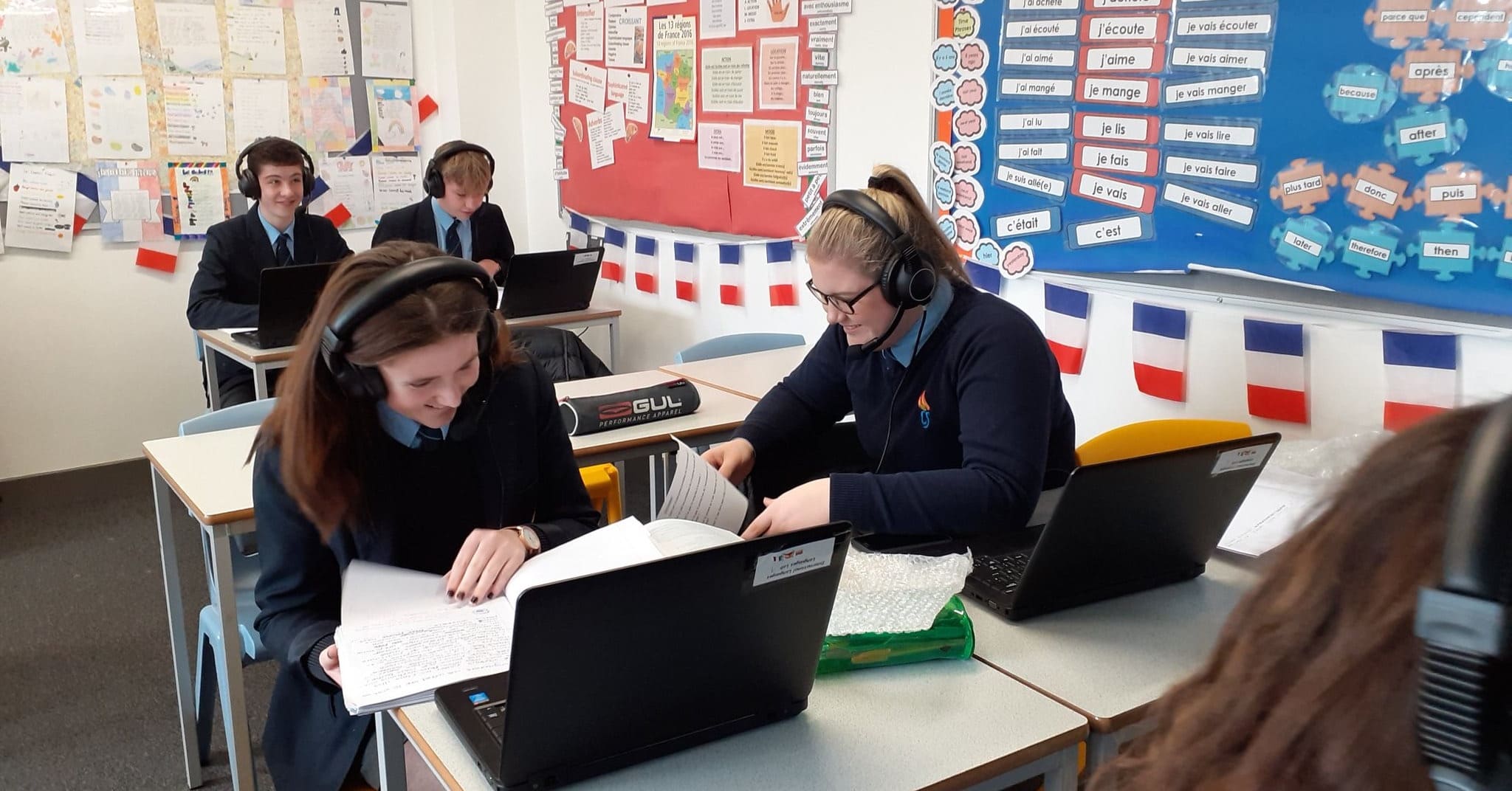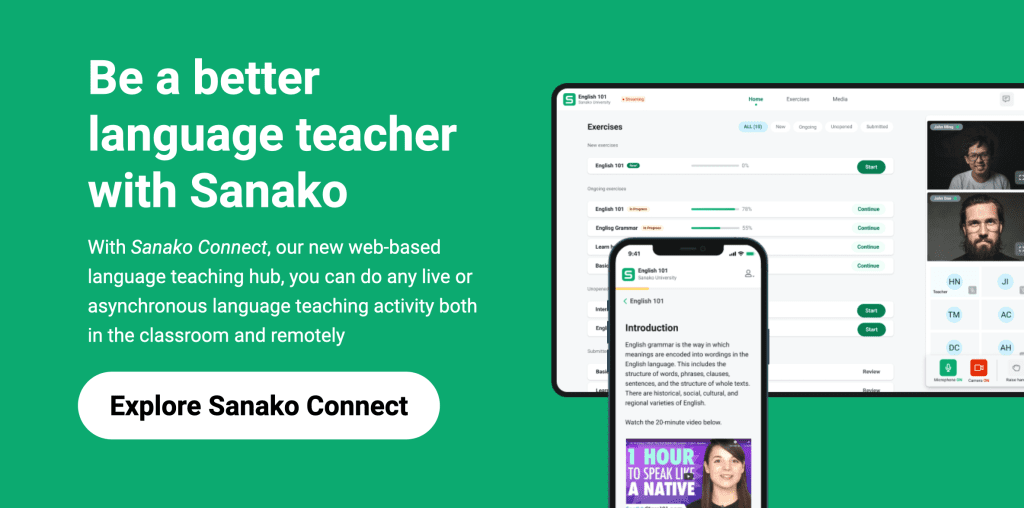For the majority of language learners, the bulk of their learning experience will take place in a formal language classroom setting. This is true whether you’re studying business English or conversational Spanish in preparation for a holiday.
Regardless of the subject or the age of the learner, educators are always looking to create the ideal language-rich environment for learning. Such environments are nurturing learning spaces which aim to provide the necessary stimulus to most effectively develop language skills. Practitioners in these classrooms maximise opportunities for their students to use their target language and to interact with both their peers and native speakers. They boost learners’ confidence and help them to develop their core language skills.
But how can educators ensure that their classrooms are ideal learning environments? This blog post identifies eight essential steps that language educators can take to create optimal circumstances for learning and teaching new languages.
1. General language classroom principles
For Dr. Liam Printer, host of the ‘The Motivated Classroom Podcast’, the perfect language learning environment should be:
- Active: i.e that it facilitates and includes a wide variety of learning tasks that get students up and moving during each class. This helps to keep them attentive, focused on the task ahead of them and motivated to learn.
- Supportive: i.e that all learners are comfortable in the classroom. And that they feel able to make progress, to ask questions and, most importantly, to make mistakes when using their target language.
- Cooperative: ie. that the classroom (and educator) enable learners to communicate with their peers as much as possible in their target language to build up fluency and core language skills.
2. Address student needs
Building on the above, the next to-do is simple – make sure that the classroom environment meets the needs of your students. Like all human beings, students are more motivated to learn when their physical and psychological needs have been met. Consider therefore if your classrooms are secure, calm and orderly; do they help students to feel that this is a space for them and one in which they belong and can have fun?
If it’s possible for students to play a role in creating their own learning environment and to demonstrate their agency in the learning process, then encourage and facilitate this whenever possible. When teachers meet these needs and create the right classroom environment, students are happier to be in class, instances of poor behaviour are reduced and engagement, motivation and learning are significantly enhanced.
3. A dedicated environment
In an ideal world, language learning would always take place in a dedicated classroom – it’s instinctively difficult to teach French in a science classroom, for example. We appreciate that this isn’t always possible, but do argue the case for your own room that can be dressed and tailored accordingly.
According to Justice 2004, this approach is most effective in helping to create a rich linguistic environment for language learning. A wider review of the literature also indicates that exhibiting visual materials in the classroom and maintaining a high level of visual exposure to the target language both make essential contributions to supporting students’ language acquisition.
4. Visual cues and prompts
So what might these visual materials look like?
Firstly, it can be hugely helpful to simply label key classroom objects (in first and target languages) to help learners understand their immediate surroundings. Labels also help educators when they’re explaining what they want students to do or when they’re giving directions as part of the Total Physical Response teaching approach. Keep it simple and start with items that they will frequently encounter: “book/livre”, “pen/stylo” and “computer/ordinateur.”
Similarly labels and pictures can be effectively used to provide a broad outline of a lesson or a day’s learning plan. Breaks, food and different topics/subjects can be easily illustrated using universally recognised images to give learners a good sense of how the day or lesson will pan out.
5. Scaffolding learning
The use of word walls and anchor charts are also widely recognized as key components of language-rich learning environments. Indeed Marzano’s 2004 research indicated that these permanent visual reference points can increase learners’ comprehension by a third, thanks to their direct subject or topic-specific context.
Both formats can also help to build student agency if they are allowed to choose and add words / concepts as well as generating them through group or whole class discussions. Anchor charts are invaluable tools for learning grammar and sentence construction as they provide clear connections to what they already know. They can therefore provide invaluable scaffolding for learning to support students as they tackle new learning objectives.
6. Flexible classroom design
It’s also important that the language teaching classroom is highly flexible, so that the teacher can easily move tables and chairs to suit the language learning activities and objectives that she has in mind. This might, for example, mean students sitting in rows facing the front for direct instruction, in pairs for conversation practice, in small groups for collaboration projects or in a large circle for whole-class activities.
In this way, language teachers are able to design their classroom setting to appeal to students and to attract and maintain their attention. Maximising the opportunities for conversation practice also directly helps improve students’ speaking skills and rapidly builds their confidence and fluency.
7. Celebrate success
For both formal and informal language learners, it can sometimes be difficult to see much progress. The vocabulary just doesn’t stick and the grammar rules become confusing despite numerous examples and run-throughs. So it can be hugely motivating for students (and educators!) to celebrate success when it happens.
Of course, this doesn’t necessarily mean that a bottle of something sparkling should be opened every time the class achieves a learning goal, but it’s good to build a culture that recognises and rewards progress. Maybe you could play some language games, watch some target language-specific videos or invite a special guest to talk to the class. Make it fun, make it memorable to help maintain student motivation.
8. Use technology to support teaching and learning
In addition to having high-quality headphones to support listening and speaking activities, there’s a clear case for including the right educational technology set-up in the ideal language classroom. This is based on the clear evidence that educational software supports and enhances language teachers’ work as well as offering dynamic learning content to students.
Such educational software tools also provide highly flexible solutions for teachers to deliver their lessons face-to-face and remotely. This increases the flexibility of provision and enables students to access classes at a time and location that is convenient for them. Most importantly, language teaching software tools such as Sanako Connect prioritise the development of speaking and listening skills and help teachers maximise the time each student spends speaking and actively practicing oral language skills during class.
For Sanako, helping teachers to create the best language learning classroom is at the very heart of our business. Our teacher-led language instruction products are specifically designed to support educators in creating compelling lessons and to best engage their learners. We constantly test products with students to ensure that they’re fit for the classroom. And we continue to listen to, and act on, our users’ feedback and suggestions to keep products improving. As a result, we now have education customers in 114 countries and in over 50,000+ classrooms – all of whom recognise the invaluable contribution that our solutions make to creating a language-rich classroom environment.
If you’d like to find out more about how Sanako Connect language teaching platform could transform your approach to language teaching, click below to learn more and to arrange your FREE demo!



